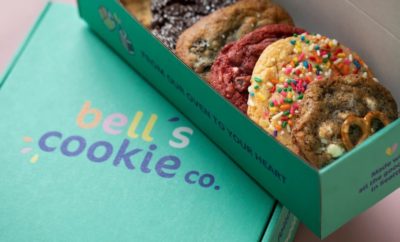Features
Fake Food Mystery Challenge Wheel
By: Jamie Steinberg
If you are a child of the 80’s you will remember the game Simon. It was a circular game with colored panels that lit up and you’d have to mimic the color patterns in order to win. That is how Fake Food Mystery Challenge Wheel looks – a colored paneled circular game. Although, where you’d have to mimic color patterns, here it becomes more like the game Twister. You spin a wheel and whatever color that it lands on you must use whatever is inside the corresponding compartment to make a food item that is written on a color coordinated card. Sound simple? Not exactly. When playing Fake Food Mystery Challenge Wheel, you’ll need plenty of patience, time and energy to find the fun.
YouTube phenoms Collins and Devan Key have partnered with Moose Toys in order to create the Fake Food Mystery Challenge Wheel. The Keys are famously known for their DIY food, pancake art, pranks and more, so clearly their concept engages their fanbase on all levels. The gist of the game is to spin the Mystery Challenge Wheel and whatever color it lands on you select a card from the matching slot to find out the food (for example watermelon, brownie, burger, salad, etc.) you will make. From there, said player opens the corresponding color compartment on the Storage Container. Next, any additional players spin the same wheel in order to determine the color of the container where they will get their “Key Compounds” (Bro Doe, Keyper Cloud, Super Slop, OMGelly and Ooze Gooze) and “Rad Adds” (Rebel Pebbles, Yeet Balls and Wigglini). At this time players are all set to make their food item that is pictured on the color corresponding card from the various items that were in the compartment. Each object found in the compartment has to be used to make the food. Once the required competition has been completed players are then able to flip their card over to follow the directions on the back of it in order to do an extra challenge. All of this should be completed within thirty seconds or a minute (depending on what you all determine at the start of the game). When the timer goes off it’s up to players to end their work and spin one last time. The winner is the player whose food item matches the selected description (i.e. Messiest, Neatest, Most Artistic, etc.) Phew! I’m exhausted and all I’ve done is share the instructions!
With so much to do before you even play the game you start to feel a bit over all the steps needed just to even begin. Then, add to that all the compounds and tools and you have gotten to the point where you find yourself playing a handful of times before throwing in the towel. It may not be a complicated concept, but it is just the shear amount of energy that goes into it that may put you off. This game is noted to be for ages 6+; however, with all of the components, compounds and instructions I find that a bit too young for participation. I’d venture this is more for at least a middle school aged child. In fact, I played with an eleven-year-old and a fourteen-year-old and both agreed after a couple of rounds that they would rather mess around with the materials on their own than go through the steps it takes to play the game.
Sure, my art skills aren’t that great, but that’s the fun of Fake Food Mystery Challenge Wheel. However, after all the steps and items involved in completing a challenge it all gets too overwhelming and too much to take on to find that fun. With that being said, I think I’d rather actually play Simon or Twister than create fake food.





You must be logged in to post a comment Login